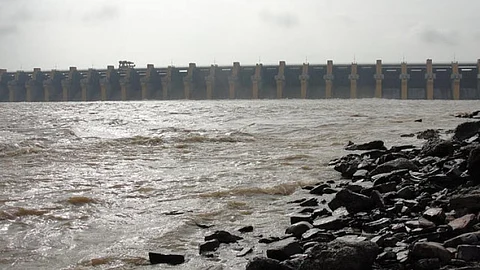
- Topics
- Feature
- Opportunities & Events
- Data
- Hindi Portal
- Topics
- Feature
- Opportunities & Events
- Data
- Hindi Portal

According to the recent data from the Central Water Commission (CWC), water storage in more than 60 percent of the basins is much lesser when compared to the average water storage over the last 10 years. The CWC monitored 12 river basins for water storage in 2017-18 and 2018-19 and found that the river basins of Tapti, Sabarmati, and rivers of Kutch are the worst affected, with more than 50 percent shortage in average water storage capacity compared to last 10 years. Even Ganga, Godavari, Krishna and Mahanadi have a shortage of water. The data raises serious concern over long-term water availability and questions the country's preparedness for upcoming challenges.
Summers have just started and many Indian cities—Mumbai, Jaipur, Chennai, Nagpur, Bathinda and Lucknow—have already started water rationing due to acute water shortage. Mumbai announced a 10 percent water cut and cut in supply timing by 15 percent in mid November 2018. Due to the decrease in water storage in Bisalpur dam, Jaipur started water cut even before the monsoon ended in September 2018. News reports have revealed that the water supply in Chennai's suburbs has already been reduced to once a week while Nagpur is preparing itself for water cuts. Lucknow is also under water stress due to a single source of water and the lack of a sustainability plan.
In order to improve the connectivity in northeastern Bihar and to bring in the much needed economic activity to the region, a new bridge, named after former Prime Minister Atal Bihari Vajpayee, has been inaugurated over the Kosi river in the state. However, the residents and a number of local NGOs are up against the bridge as they fear high flood surges. The engineers tasked to build Atal Setu have built the embankments bringing the width of the river from 14 km to two km by the time it flows under the bridge. As a large volume of water has been restricted to a relatively narrow channel, people living in villages immediately downstream of Atal Setu are the most scared, since they can foresee the river flooding their farms and homes after every heavy monsoon.
As per a joint investigation conducted by the Gujarat Pollution Control Board (GPCB) and the Paryavaran Suraksha Samiti (PSS) to look into the implementation of the Supreme Court order on the industrial effluent and sewerage discharge into the Sabarmati river in Ahmedabad district, alarmingly high level of pollution is found in the Sabarmati river which is found to be dry in the Ahmedabad city stretch, before the riverfront project. The report highlighted that within the riverfront project stretch, the river is brimming with stagnant water while in the last 120 km, the river is dead as it comprises industrial effluent and sewage. The report has blamed Gujarat government's ambitious riverfront development project which has not only rendered the Sabarmati river dry but has also led to poor groundwater recharge and increased reliance on an already suffering Narmada river.
A 26-year-old mechanical engineer, Ramveer Tanwar quit his job with a multinational to focus on conservation of ponds. In the past five years, Tanwar has been instrumental in reviving 10 village ponds. Noticing the mistreatment to small water bodies in rural Uttar Pradesh, he started organising jal chaupal from village to village for making the people aware about the need to stop throwing garbage into the ponds. Tanwar and his team of volunteers undertook the first pond clean up in 2014 in Dabra village. To get more volunteer support, he has also created a Facebook page Boond Boond Pani. In 2018, after a lot of effort the initiative of pond clean-up received the first CSR funding of Rs 2.5 lakh and this year a company has given Rs seven lakh funding for the revival of a pond in Ghangola village.
This is a roundup of important news published between April 4- 9, 2019. Also read policy matters this week.